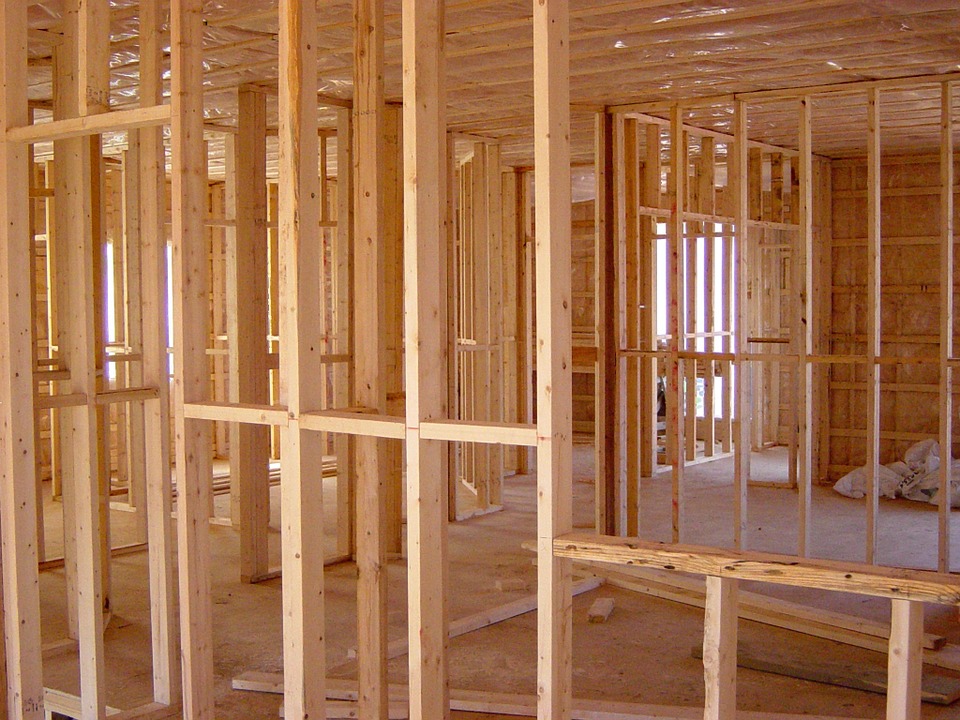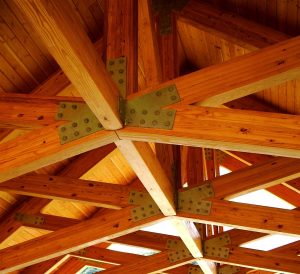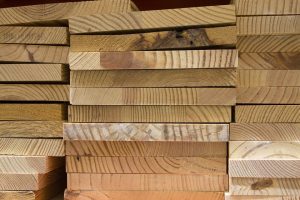There are several different types of timber available for use in the construction industry within the UK. The most commonly used timbers are C16 timber and C24 timber, but what are they and which timber should you use?
Table of contents:
- What is C16 timber?
- What is C24 timber?
- What is CLS timber?
- What is regularised timber?
- What is carcassing timber?
- Should I use C16 or C24 timber?
What is C16 timber?
C16 timber is the most commonly used form of timber in the UK, as it can be used in a wide range of applications, and is also the most cost-effective form of timber available. C16 timber is kiln dried, to minimise the amount of moisture within the wood, and is most commonly used in internal construction projects such as walls, floor and roof joists.

C16 timber properties make the timber product cost-effective because it has the strength and other properties, including bending, compression and density, that are required for use in construction, but it also has some defects. Defects such as grain deviations may affect the strength of the C16 timber, but C16 timber may also have some superficial defects such as sap stains and an uneven surface.
What is C24 timber?
C24 timber is another form of timber that is kiln-dried to minimise moisture content and is also widely used in the UK in construction projects, although it is less common than C16 timber.
 C24 timber is the more high-quality form of timber available and is obviously superior to C16 timber in both appearance and properties, but this is also reflected in the higher cost. C24 timber has few defects, both in characteristics and appearance, meaning that C24 timber is stronger and more resilient, whilst also having a more aesthetically pleasing appearance. However, C24 timber is often imported to achieve the required characteristics, further increasing the costs.
C24 timber is the more high-quality form of timber available and is obviously superior to C16 timber in both appearance and properties, but this is also reflected in the higher cost. C24 timber has few defects, both in characteristics and appearance, meaning that C24 timber is stronger and more resilient, whilst also having a more aesthetically pleasing appearance. However, C24 timber is often imported to achieve the required characteristics, further increasing the costs.
What is CLS timber?
CLS timber is Canadian Lumber Standard timber, the name of which derived from its popularity in Canada for building houses with timber frames. However, it has recently grown in popularity in the UK for timber frame houses, stud walls, partitions and frames. CLS timber is available in both C16 and C24 grades.
What is regularised timber?
Regularised timber is timber of any grade that has been finished with a machine to ensure that the pieces of timber are regular and consistent, with fewer variations between different timber battens, and also reduced variations along with a single piece of timber.
What is carcassing timber?
Carcassing timber is the phrase used to describe softwood that has been kiln-dried and treated and then graded using a grading stamp according to its quality and characteristics, such as C16 or C24 timber.
C16 and C24 timber – which should I choose?
Although made from the same wood, there are several differences between C16 and C24 timber. Both C16 and C24 timber will perform well in general construction projects, despite C24 timber being of a higher quality.
If you’re looking for the most cost-effective timber product available, to stay within budget or to save money wherever possible, C16 is the best product for you. C16 timber is generally made within the UK, keeping costs down, and is of slightly poorer quality with some defects, but is still strong and resilient, making it useful for strength and load-bearing.
If you’re looking to keep the timber products unvarnished and visible within your project, you may prefer to opt for C24 timber – the C24 timber has a more uniform shape and is more aesthetically pleasing. Additionally, C24 timber is often available in wider formats, making the overall appearance more attractive than C16 timber.
For larger-scale projects, or where strength is crucial, such as balconies, terraces and bridges, the recommended timber product would be C24 timber, due to its superior physical qualities and strength.
Keep in mind that both types of timber are available in multiple sizes, so don’t forget to check out our dedicated C16 vs C24 size guide to find out more.











